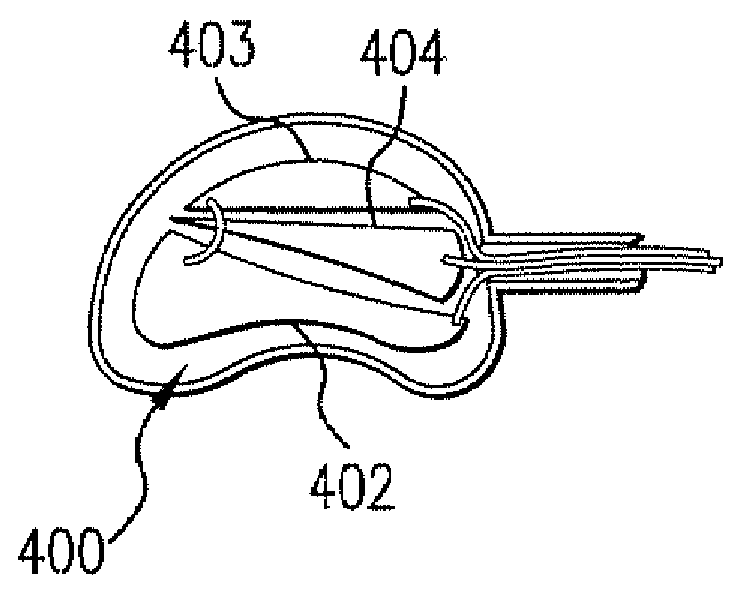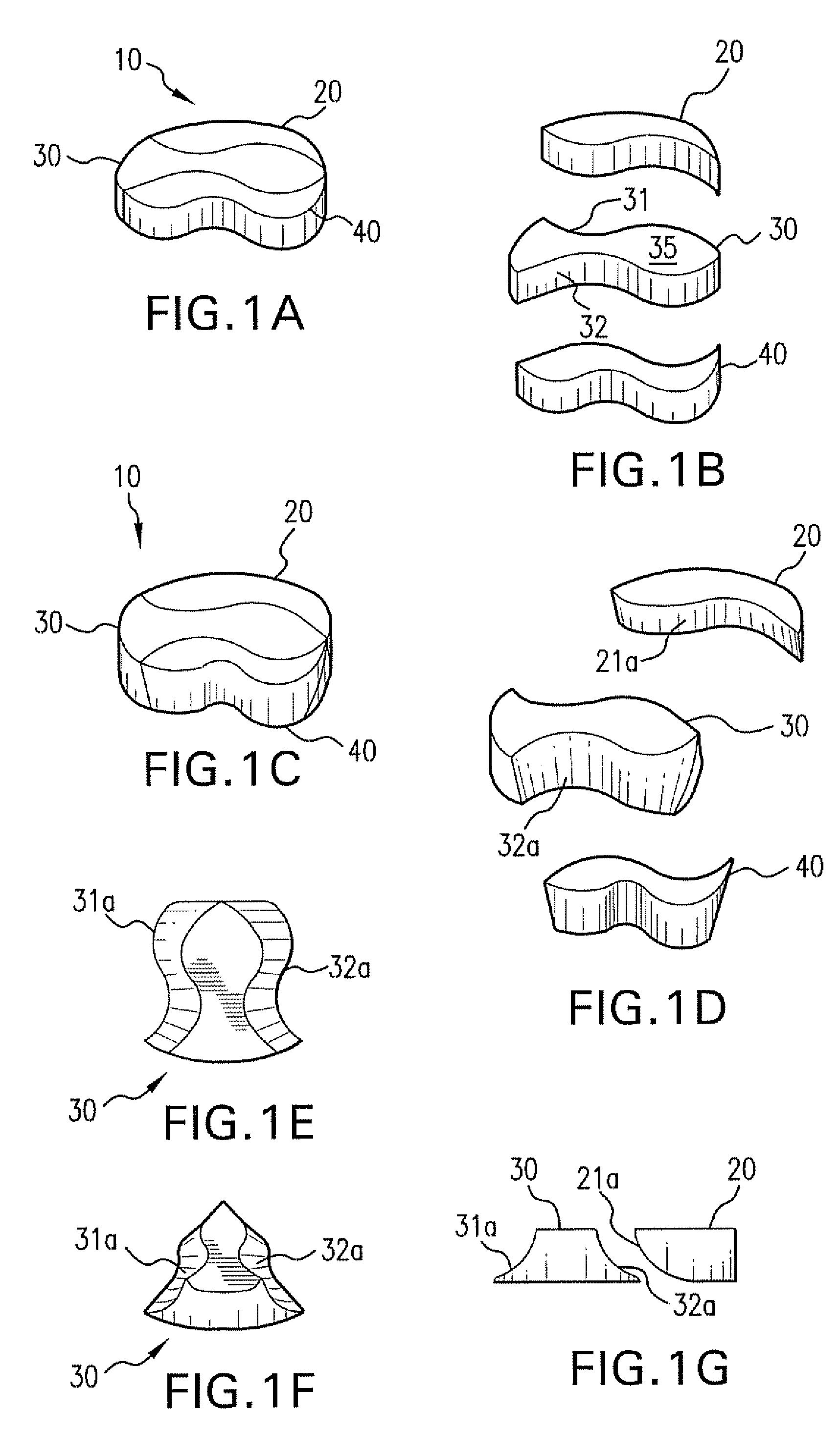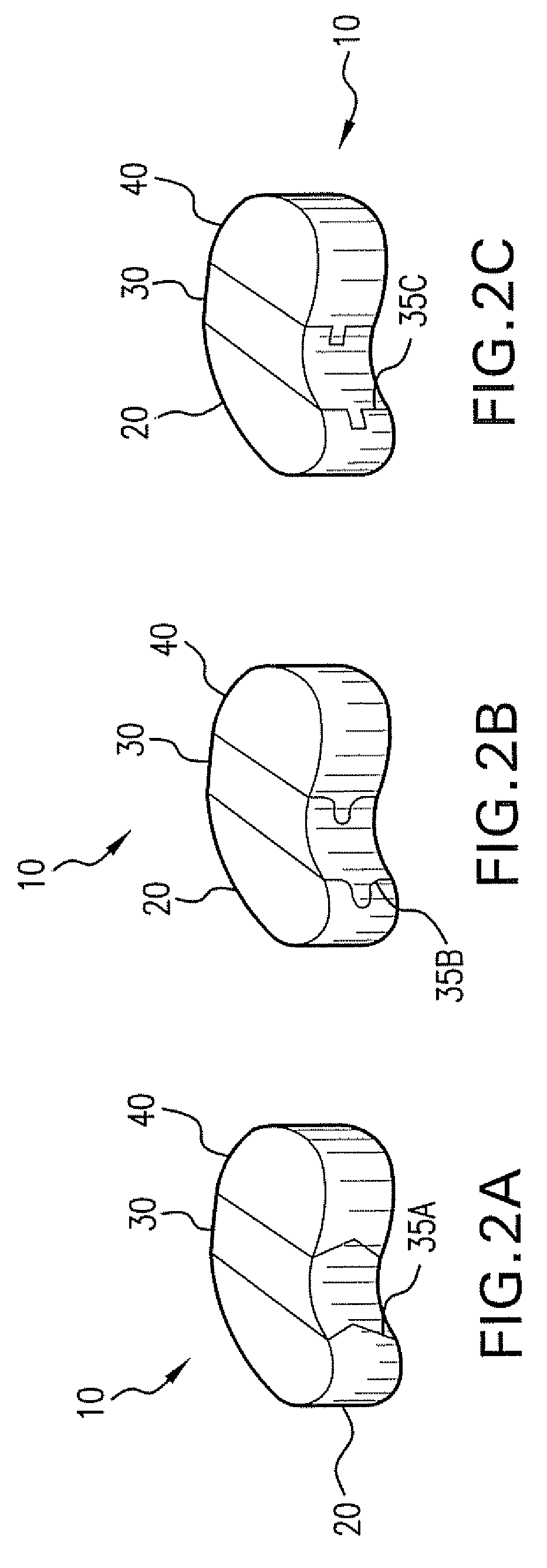Spinal implant
a spinal implant and module technology, applied in the field of modules of spinal implants, can solve the problems of affecting the function of spinal implants, so as to achieve less scarring, less invasiveness, and convenient removal
- Summary
- Abstract
- Description
- Claims
- Application Information
AI Technical Summary
Benefits of technology
Problems solved by technology
Method used
Image
Examples
Embodiment Construction
[0023]FIGS. 1A and 1B show one embodiment of the spinal implant of this invention. The implant 10 is composed of a first component 20, a second component 30, an a third component 40. Together the components form an implant 10 that is configured and sized to fit into a given spinal disc. The implant 10 is sized according to the disc where the implant is to be inserted. It should be appreciated that the components compliment one another, and when placed in the disc abut one another. In FIGS. 1A and 1B, the sides 31, 32 of the second component 30 are perpendicular to the face 35. The sides of the first component 20 and the third component 40 are similarly perpendicular to their respective faces. In FIGS. 1A and 1B, the second component 30 has a “fish” shaped face 35, with the components together forming an implant 10. The implant 10 can be configured with the sides of each component pointing in different directions depending on whether the implant is inserted via a posterior approach, ...
PUM
| Property | Measurement | Unit |
|---|---|---|
| height | aaaaa | aaaaa |
| shape | aaaaa | aaaaa |
| elastic | aaaaa | aaaaa |
Abstract
Description
Claims
Application Information
 Login to View More
Login to View More - R&D
- Intellectual Property
- Life Sciences
- Materials
- Tech Scout
- Unparalleled Data Quality
- Higher Quality Content
- 60% Fewer Hallucinations
Browse by: Latest US Patents, China's latest patents, Technical Efficacy Thesaurus, Application Domain, Technology Topic, Popular Technical Reports.
© 2025 PatSnap. All rights reserved.Legal|Privacy policy|Modern Slavery Act Transparency Statement|Sitemap|About US| Contact US: help@patsnap.com



